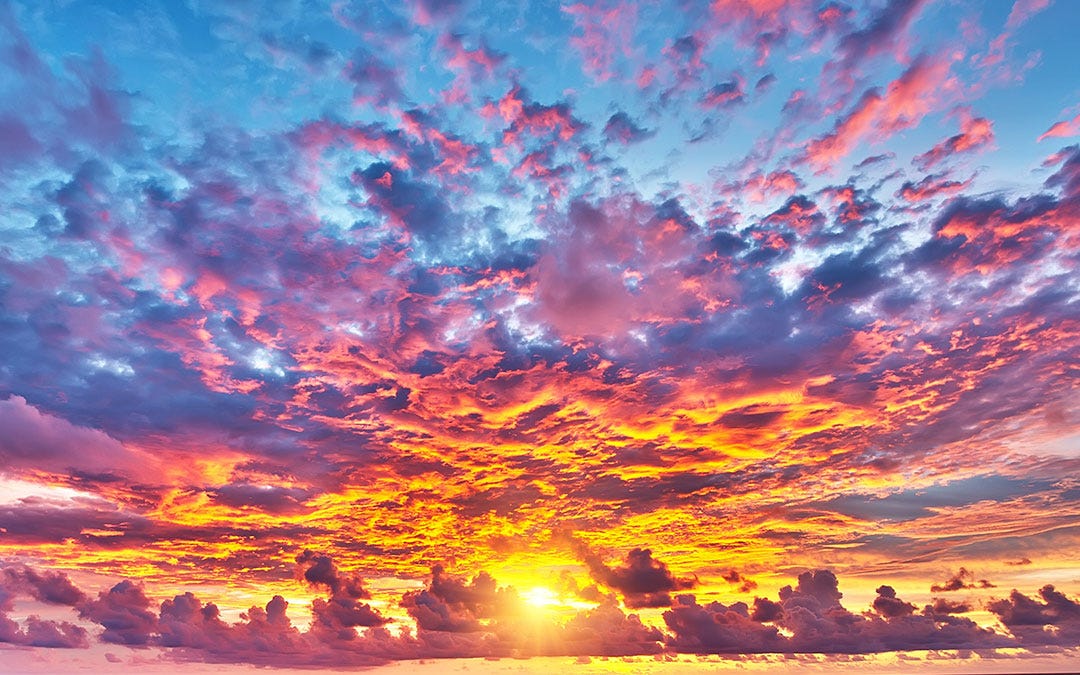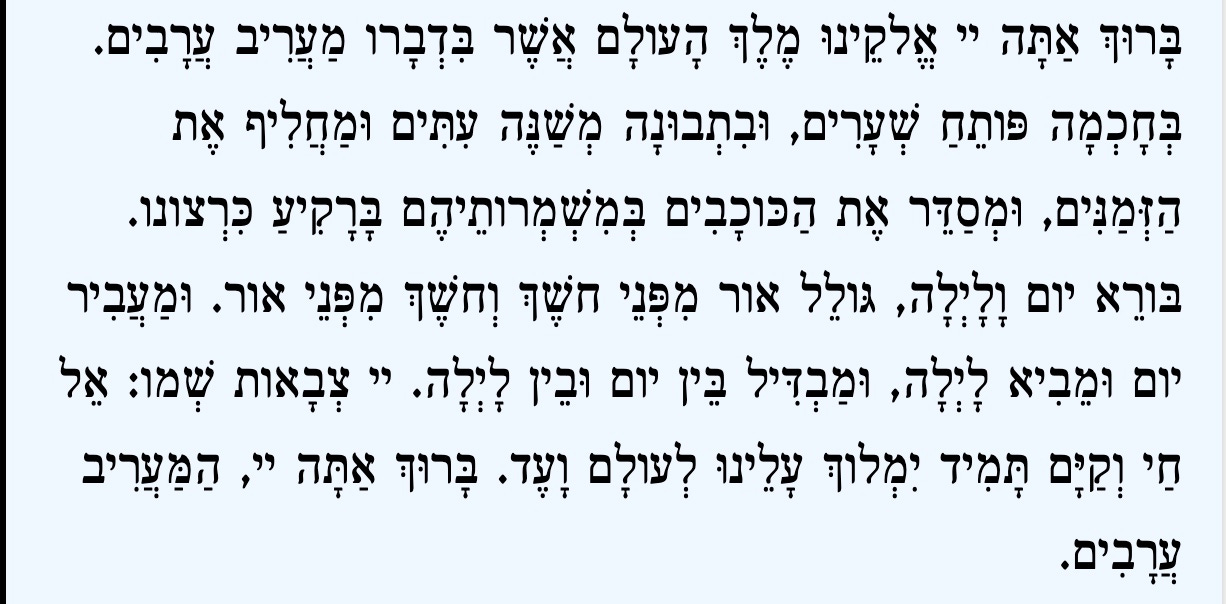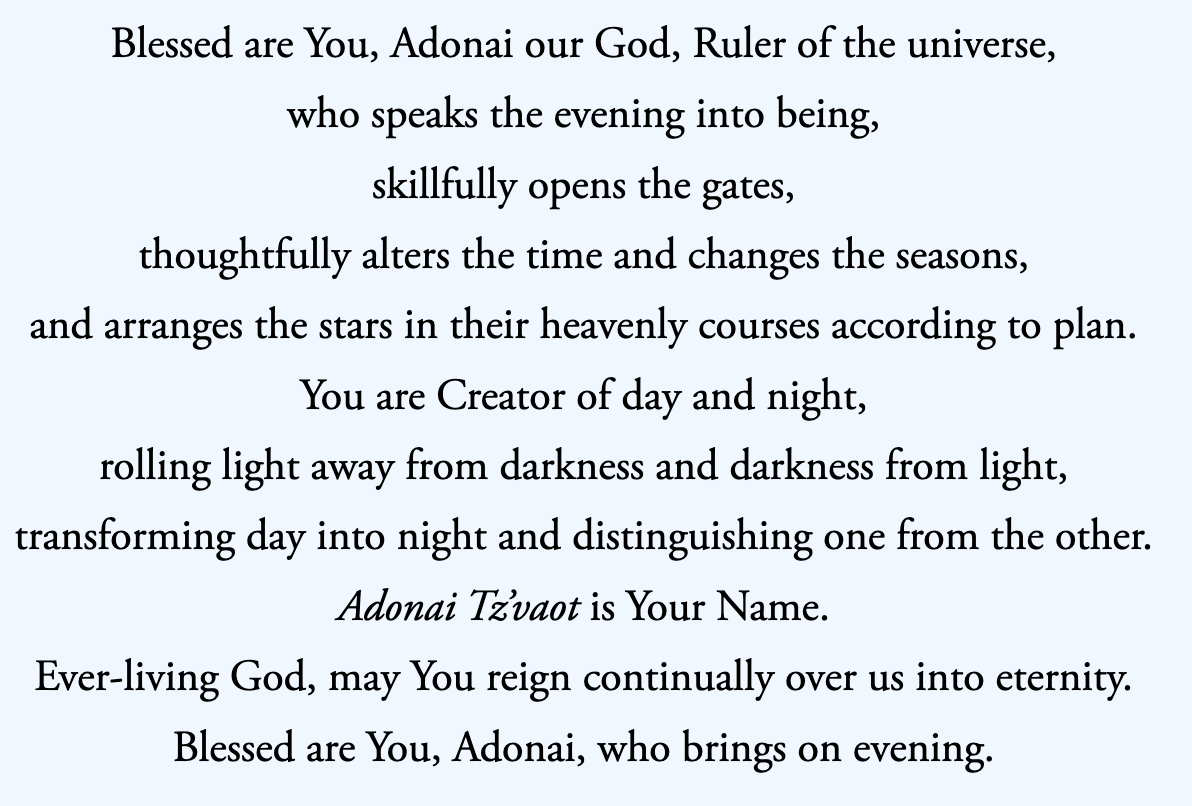The Secret Wisdom of Separation
A Meditation on the Ma'ariv Aravim
“There are shades of a sunset, There are shades of a sunrise.”
– Javier Levine, The Book of Aphorisms
My favorite prayer is the Ma’ariv Aravim.
I know you aren’t supposed to have favorites, but I do.
As a poet, I could try for a lifetime, but I would never come close to arranging a collection of words as beautiful as this one.
I am sorry to say that although I learned this prayer when I was a child, I did not appreciate it until its majesty was pointed out to me by a 17 year old Yeshiva Bucher (student), who off-handedly remarked,
“Have you ever thought about how crazy it is that G-d created night? Like, He could have just made everything day… but He didn’t.”
The student took a long pause to contemplate the truly profound nature of this revelation. Then he said,
“And that’s really good, because now we have Monday Night Football.”
In his youthful naivete, there was also great wisdom.
Nighttime is fundamentally different from daytime, which anyone who has ever played a sport knows.
Why is it that there is something so special about “playing under the lights? Why do we perceive that as being more gloriously romantic than playing during the daytime?
Why do we reserve parties and special celebrations for the dark and cold of evening, when we could just as easily celebrate in the daylight?
There is something special about the night.
And there is something special about the day too.
But what makes them both so special is the separation between them.
Day does not just become night, and night does not just become day.
There is a pageantry that marks the occasion, a beautiful duet played between the twin spirits of light and shadow.
No one can quite say when exactly one becomes the other; one can only know that one has passed when the other has come to stay.
And yet this dance happens like clockwork everyday.
G-d could have made the transition immediate. He could have made it artless. But instead, he made it the most beautiful time of the day.
We mark our time upon this earth according to the rolling tides of the morning and evening, only able to really understand one in contrast to the other.
The night is dark and full of terrors, but also filled with romance and adventure, danger and intrigue, shadows and shades.
The day is bright and full of safety, but also filled with toil and strife, business and boredom, sunburns and solicitations.
The beauty of the Maariv Aravim prayer is how it acknowledges our need for this dynamic duality. One is not “better” than the other, nor does that even really matter. What truly matters, and what we are truly grateful for, is that we have both.
And, perhaps even more than that we have both, we celebrate the separation between the two.
Judaism is fixated on separations – day and night, milk and meat, weekday and shabbos, to name a few.
And we celebrate many of these separations by lighting candles, to recall the great separation that made the universe possible, G-d’s separation of light from dark.
Separations are important. They show us where one thing ends and another begins.
But in life, as in a sunset, one can never really know the exact moment when things separate. Like a sunset, separations in worldly events are drawn out affairs that have no clear beginning, and no clear end.
I believe we are in one of those great global separations right now.
I began covering this wave of antisemitism in 2021 and the way it had infected so many of our institutions, and no one could see it.
But now people can see it very clearly.
As awful as this year has been, there are whispers in the wind that something is going to change.
We are living through the sunset of antizionism.
When the sun is shining, people don’t notice it. There is too much going on in the day to be distracted by such things.
But people pay attention to a sunset.
The difficulty with sunsets, though, is that they can often look just the same as a sunrise, and vice-versa.
I would be lying if I said that I did not fear that the opposite was true.
That this could be the sunset of Zionism and the sunrise of antizionism.
But it’s not.
Antizionism is a lot older than people realize. Students for a Jewless Palestine was founded in 2001, and the PLO has been organizing intersectional events with black radicals since the 70s.
And, in that time, all they have been able to do is conquer academia and the mainstream media.
For many years, I could not believe this, nor could I fathom how strong antizionism must have been for them to do this.
But I had just mixed up the separation.
Antizionism controls academia and the media. Ironic, I know.
However, this is not a testament to the strength of antizionism but rather to the weakness of these institutions.
What we thought were scholars who loved debate and discourse were actually sycophants milking tenure.
What we thought were journalists who loved truth seeking were actually bloggers just trying to stay relevant.
Sadly, if an institution is weak enough to get taken over by an intellectual idea as weak as antizionism it was never strong enough to matter in the first place.
The sages of the Talmud teach us: “Who is wise? He who sees the new moon in the sky.”
Although the sky has looked so black for so long, if you look at it from just the right angle, you can see the new moon coming.
A New Moon for the Jewish people, bringing peace and prosperity, joy and tranquility, and an end to all of this awful antizionist nonsense.
For those of you reading before Yom Kippur, I wish you an easy fast.
And for everyone, I wish you a year of joy and meaning, laughter and love, and one that is absolutely filled with Zionist Poetry.
Spread love, Spread Light,
Am Yisrael Chai
~





What a beautiful and scholarly perspective!